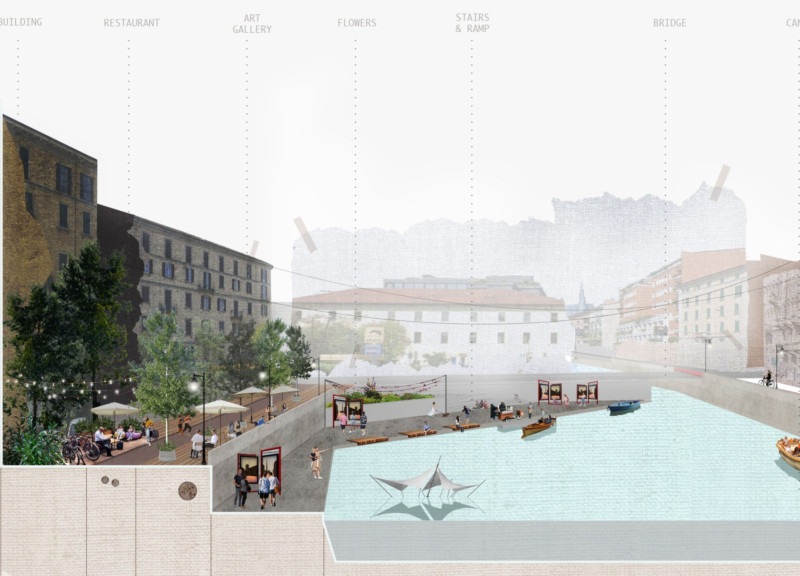5 key facts about this project
The Urban Plan of the Milan Navigli Canal focuses on revitalizing the area around this historic waterway, intertwining contemporary urban design with the cultural richness of Milan. Located in a bustling urban environment, the project aims to improve social interactions, recreational spaces, and accessibility for both pedestrians and cyclists. The core design concept revolves around the idea of a “Walk Through The Culture,” emphasizing the connection between the city’s historical significance and contemporary public engagement.
Cultural Landmarks
The project highlights significant cultural landmarks such as Cimitero Monumentale, Castello Sforzesco, and Galleria Vittorio Emanuele II. These structures serve as important points within the urban setting, illustrating Milan's architectural history and creating a narrative that invites exploration. Their presence enhances the area’s character, making it easier for people to connect with both the past and the present.
Public Engagement
Incorporating public art and leisure areas is a major aspect of the design. The layout includes pedestrian walkways, bike lanes, and spaces for outdoor galleries, aiming to turn the edges of the canal into lively cultural spots. This setup encourages active participation, allowing visitors to enjoy the environment while interacting with each other. By reducing traffic, the area becomes safer and more enjoyable for those on foot or on bicycles.
Recreational Spaces
The inclusion of green spaces is central to enhancing community well-being. Parks like Parco dell'Anfiteatro Romano and Giardini Indro Montanetti are designed not just for recreation but also to provide ecological benefits within the city. Introducing features like outdoor cinemas signals a commitment to creating varied spaces for community activities. These areas promote engagement with the outdoors while accessing urban facilities.
Design Integration
While specific materials are not mentioned, there is a focus on durability and suitability for the local context throughout the project. The public spaces aim to balance utility with visual appeal, ensuring they work well with nearby historical buildings. This attention to design detail keeps the canal area integral to Milan's identity, integrating current needs with historical considerations.
The result is an urban environment where walkable paths, public art, and historical landmarks blend together, creating an inviting atmosphere that respects both the heritage and future of Milan's Navigli Canal.






















































